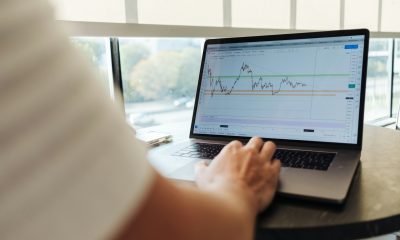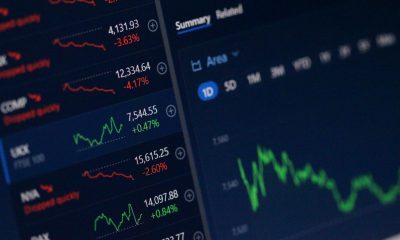Africa
Moroccan Bond Market Holds Steady Amid Easing Rates and Looming Fiscal Pressures
Morocco’s bond market remains in a holding pattern amid falling rates and low Treasury financing needs. While short-term rates are stable, easing persists across segments, especially for long-term bonds. However, upcoming public spending and monetary decisions could disrupt this fragile balance. Investors stay cautious, as subdued issuance and fiscal pressures hint at potential rate volatility.

Between falling interest rates and low financing needs, the bond market in Morocco is operating in a strategic waiting zone.
The widespread easing observed in the primary and secondary segments masks a more contrasting reality: a wait-and-see Treasury, a measured Central Bank, and cautious investors facing a fiscal climate that could soon become more tense.
Low Treasury demand and stable rates mask bond market caution as fiscal pressures and monetary shifts loom
According to the latest report from BMCE Capital Global Research (BKGR), the dynamics of the Moroccan bond market reflect a situation that remains marked by a wait-and-see attitude. Last week confirmed the continued downward trend in rates in both the primary and secondary segments, revealing a moderate appetite from the Treasury and a still-accommodative monetary environment.
But beyond the figures, it is the pace of fiscal policy and investor caution that are implicitly dictating the bond market’s pace. The first observation is that the banking liquidity deficit has narrowed slightly, falling by 1.18% to -158.8 billion dirhams (MMDH). This adjustment is explained by the increase in Bank Al-Maghrib’s 7-day advances, which rose from 48.98 to 52.4 billion.
The weighted average rate (WAR) remained stable at 2.25%, as did the Moroccan overnight index average (MONIA), which stood at 2.225%. While this stability in short-term rates may be reassuring, it nevertheless masks a configuration in which the Central Bank continues to play an active role in maintaining a certain balance of liquidity, without massively injecting new volumes.
Moreover, BKGR’s forecasts for the coming period anticipate a decrease in the volume of intervention of Bank Al-Maghrib, brought down to 49.1 billion dirhams.
A mixed fundraising on the primary bond market
The slowdown in the Treasury’s financing needs resulted in a particularly low fundraising during the last auction.
Of the 5.68 billion dirhams offered, only 480 million were retained, barely 8% of the initial volume. The auctions focused on long maturities (10 and 20 years), with respective cut-off rates of 2.8453% and 3.4608%.
BKGR notes that this weak rise has led to a further easing of the primary curve, with respective declines of 6.5 basis points for the 10-year and 7.7 points for the 20-year. This decline in rates on long maturities is cause for concern. On the one hand, it may reflect renewed optimism about fiscal sustainability, but it is mainly explained by the absence of immediate pressure on public finances.
However, this respite could be short-lived. The government recently announced a budget extension of around ten billion dirhams to finance commitments resulting from social dialogue, as well as to support the structural needs of ONEE. These factors are likely to revive demand for financing in the coming weeks, with a potential upward effect on yields.
Confirmation of the downward trend in the secondary bond market
The easing also continues on the secondary bond market, confirming a trend that began several weeks ago. The most marked declines concern long lines: -5.82 basis points for the 20-year, -4.17 for the 15-year, and -1.78 for the 2-year. Only the 30-year recorded a slight marginal increase of 0.07 points.
This development is consistent with the Treasury’s weak supply and institutional investors’ search for opportunities in secure assets in a context of uncertainty. The current configuration therefore benefits the decline in rates, but it rests on a fragile balance. An upward revision of financing requirements or a shift in the Central Bank’s stance on key interest rates—currently unchanged—could reverse the dynamic.
Discreet but Active Private Debt
In the private debt segment, a few notable issues reflect a market that is still functioning, but not excessive. These include a BMCI certificate of deposit at 2.80% over one year, and a 5-year issue from CIH at 2.92%. These levels reflect a risk premium that is still contained, in line with the general easing trend.
The BKGR report confirms a period of adjustment and transition. The general decline in interest rates, while a relief for both public and private issuers, cannot mask the challenges ahead. Fiscal policy, still cautious despite growing social commitments, will likely have to deal with more pronounced financing tensions in the second half of the year.
For investors, the decline in yields, particularly on long-term bonds, could limit the appeal of the domestic market if it continues. The lack of significant issuance in the short-term Treasury bill segment (BSF and BT) is evidence of this.
Bank Al-Maghrib’s upcoming decision on key interest rates—and the actual evolution of public spending—will therefore be the next turning point to watch. Until then, the bond market appears to continue to play the cautious card, balancing economic respite and latent uncertainty.
__
(Featured image by kschneider 2991 via Pixabay)
DISCLAIMER: This article was written by a third party contributor and does not reflect the opinion of Born2Invest, its management, staff or its associates. Please review our disclaimer for more information.
This article may include forward-looking statements. These forward-looking statements generally are identified by the words “believe,” “project,” “estimate,” “become,” “plan,” “will,” and similar expressions. These forward-looking statements involve known and unknown risks as well as uncertainties, including those discussed in the following cautionary statements and elsewhere in this article and on this site. Although the Company may believe that its expectations are based on reasonable assumptions, the actual results that the Company may achieve may differ materially from any forward-looking statements, which reflect the opinions of the management of the Company only as of the date hereof. Additionally, please make sure to read these important disclosures.
First published in LES ECO.ma. A third-party contributor translated and adapted the article from the original. In case of discrepancy, the original will prevail.
Although we made reasonable efforts to provide accurate translations, some parts may be incorrect. Born2Invest assumes no responsibility for errors, omissions or ambiguities in the translations provided on this website. Any person or entity relying on translated content does so at their own risk. Born2Invest is not responsible for losses caused by such reliance on the accuracy or reliability of translated information. If you wish to report an error or inaccuracy in the translation, we encourage you to contact us

-

 Cannabis4 days ago
Cannabis4 days agoTrump Signals Historic Shift: U.S. Weighs Reclassifying Cannabis from Schedule I to III
-

 Impact Investing2 weeks ago
Impact Investing2 weeks agoEuropean Sustainability Week 2025: Advancing ESG Amid Uncertainty
-

 Crypto14 hours ago
Crypto14 hours agoHyperliquid Proposes Burning $1B in HYPE to Make Supply Deflationary
-

 Fintech1 week ago
Fintech1 week agoArgentina’s Banks Poised to Integrate Cryptocurrencies, Paving Way for Widespread Adoption
























